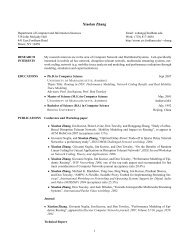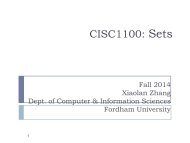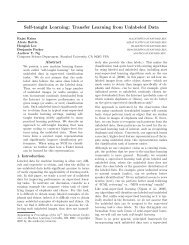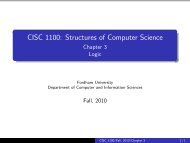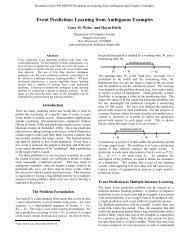Basic Principles of Transcription and Translation - Computer ...
Basic Principles of Transcription and Translation - Computer ...
Basic Principles of Transcription and Translation - Computer ...
You also want an ePaper? Increase the reach of your titles
YUMPU automatically turns print PDFs into web optimized ePapers that Google loves.
Mechanisms <strong>of</strong> Post-<strong>Transcription</strong>al<br />
Regulation<br />
<strong>Transcription</strong> alone does not account for gene expression<br />
Regulatory mechanisms can operate at various stages<br />
after transcription<br />
Such mechanisms allow a cell to fine-tune gene expression<br />
rapidly in response to environmental changes<br />
Control <strong>of</strong> RNA processing<br />
In alternative RNA splicing, different mRNA molecules<br />
are produced from the same primary transcript,<br />
depending on which RNA segments are treated as<br />
exons <strong>and</strong> which as introns<br />
Alternative splicing- For example different muscle cells<br />
express slightly different forms <strong>of</strong> the troponin gene by<br />
utilizing alternative splicing. This generates proteins with<br />
somewhat unique functions<br />
Nuclear envelope- UTRs contain zipcodes which allow<br />
the RNA to exit the nucleus with the aid <strong>of</strong> proteins which<br />
recognize it <strong>and</strong> selectively bind to it. In addition these<br />
unique zipcodes specify to which cytoplasmic location<br />
these RNA must move. This is crucial during embryonic<br />
development.




